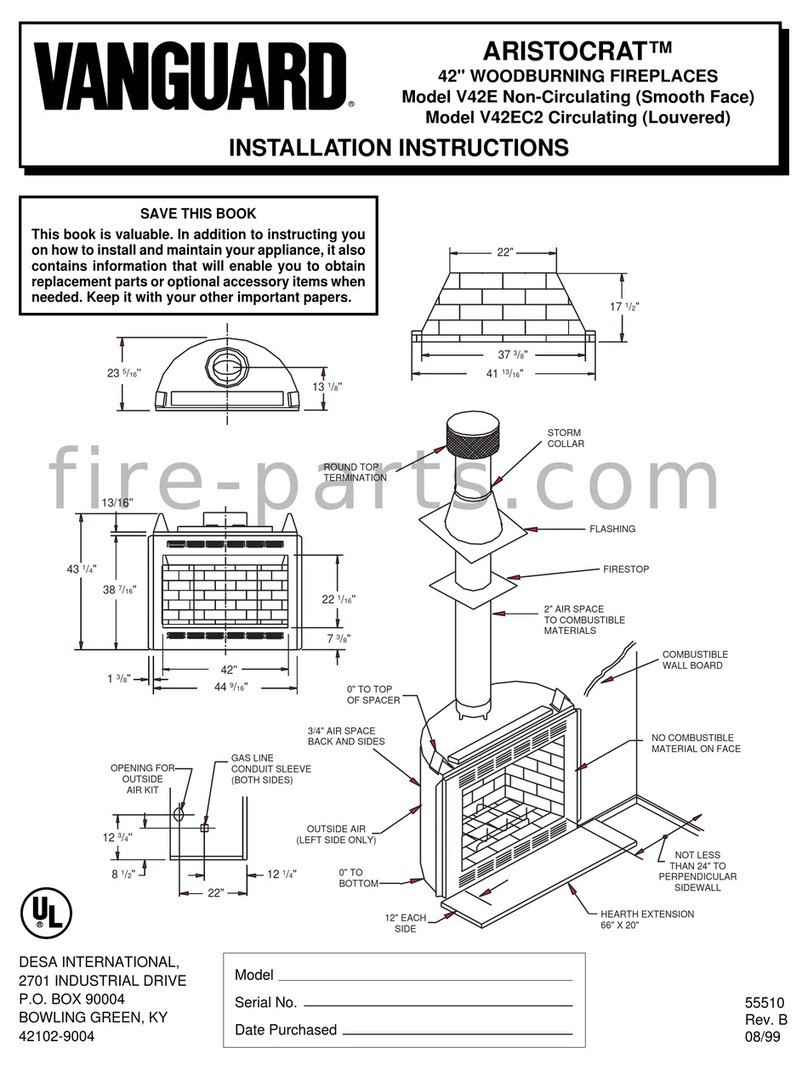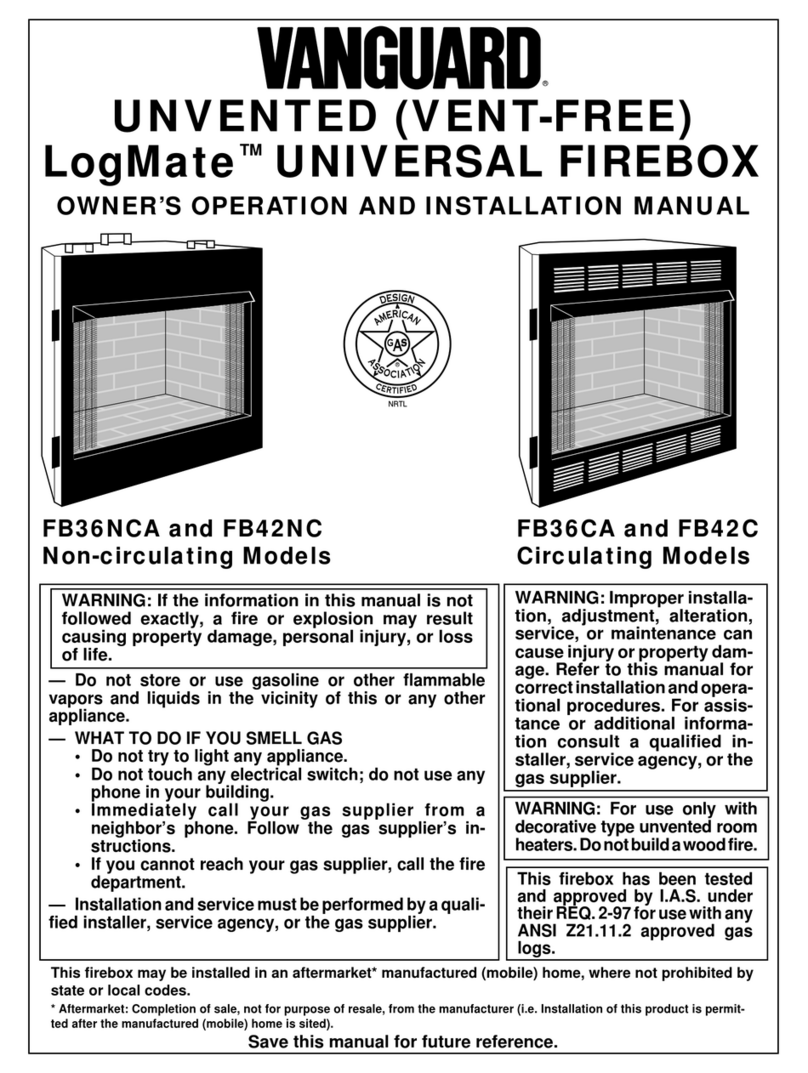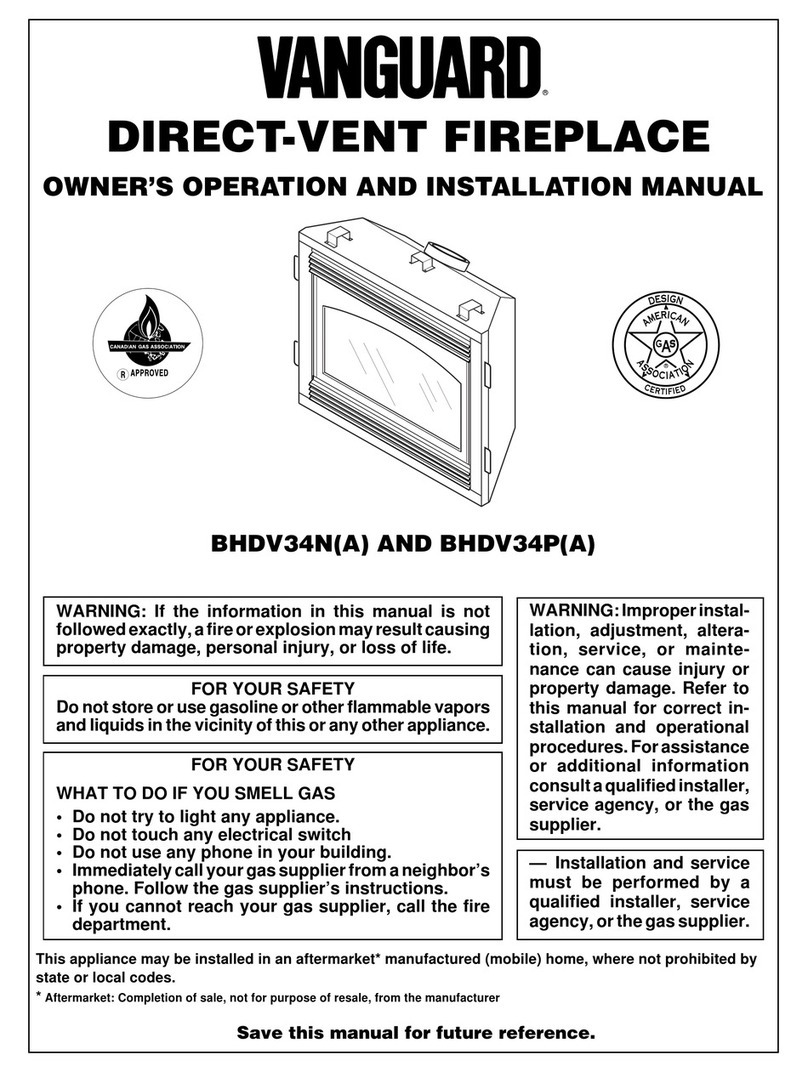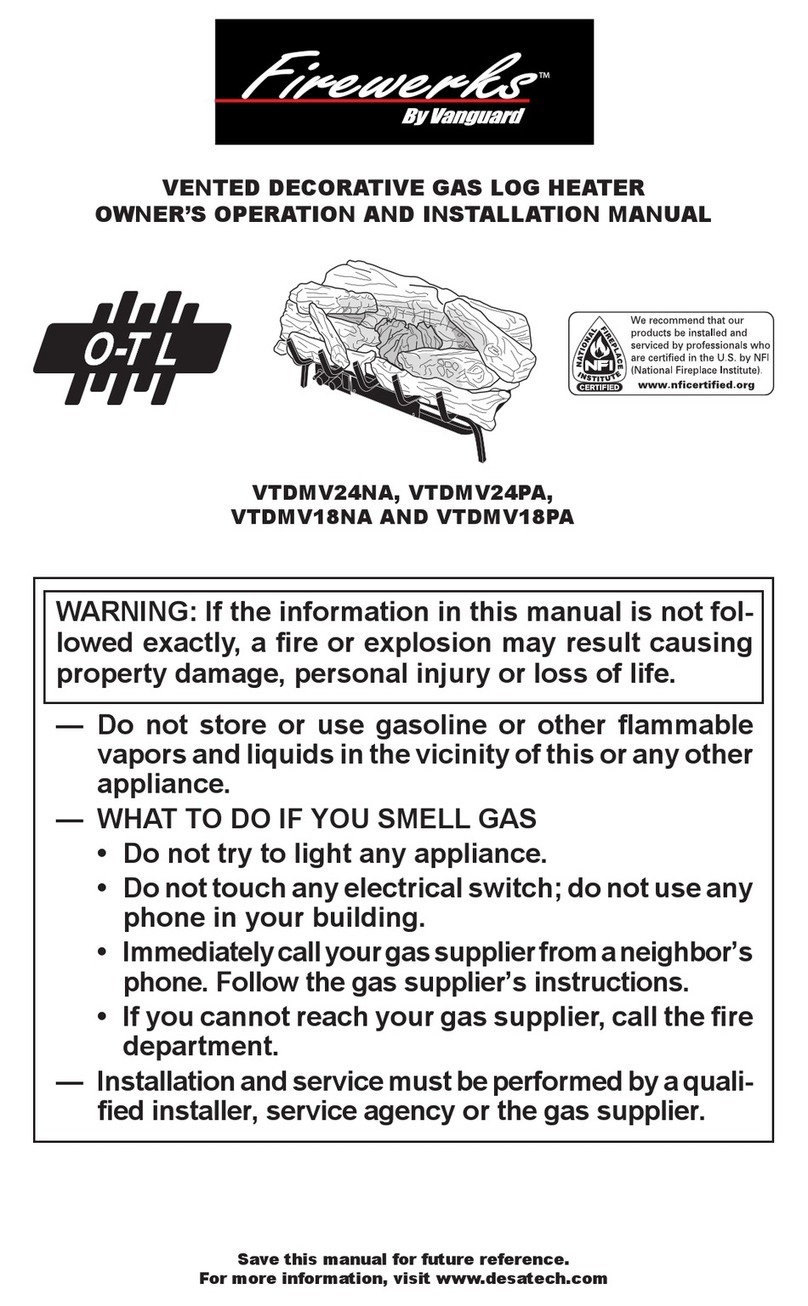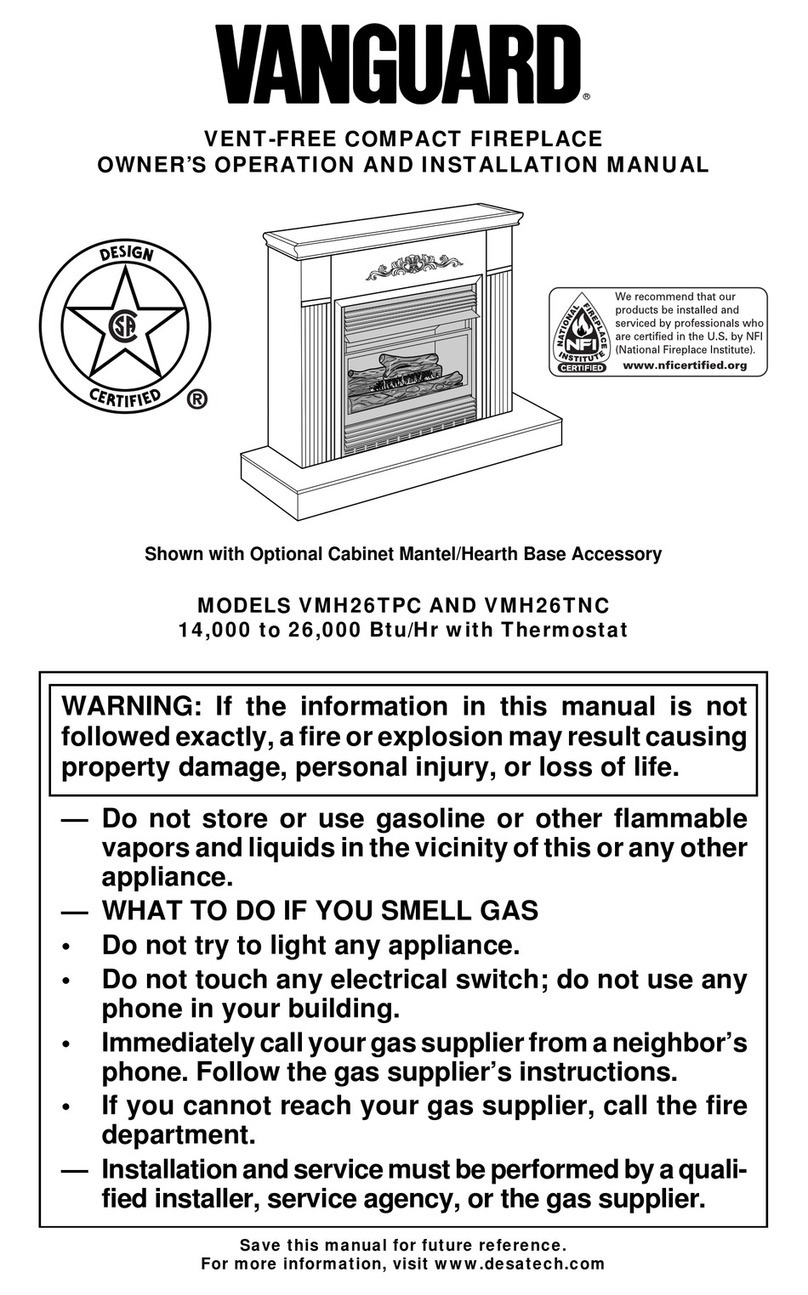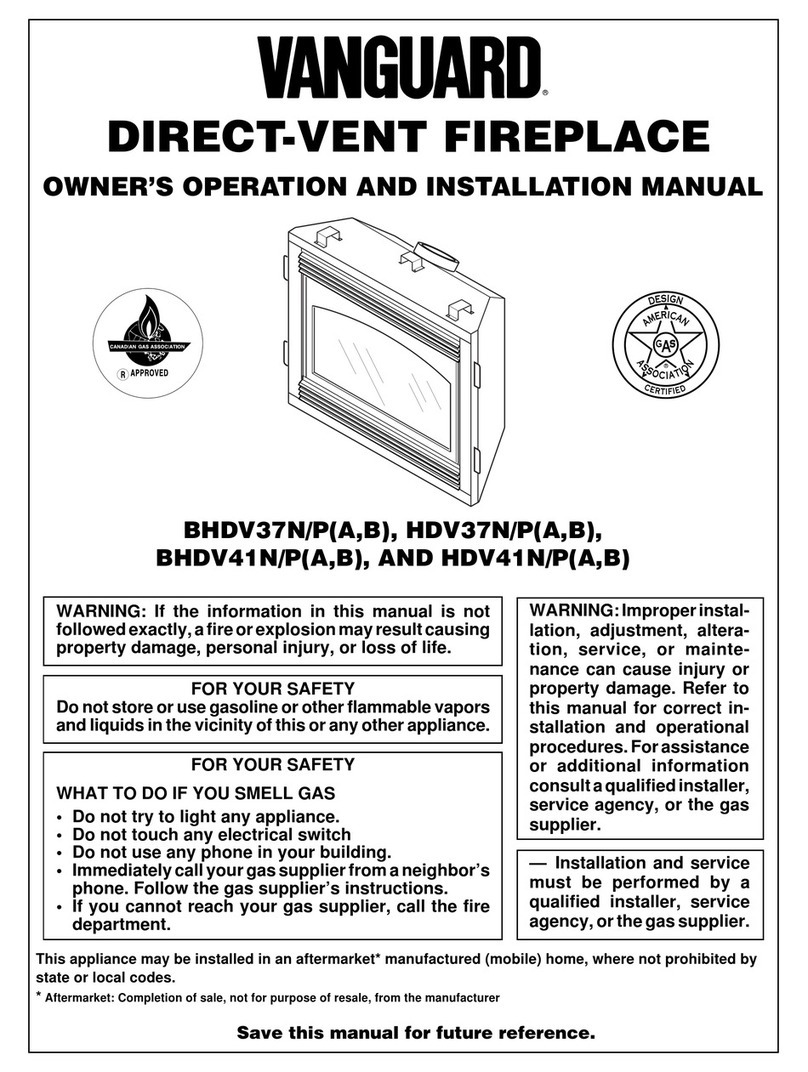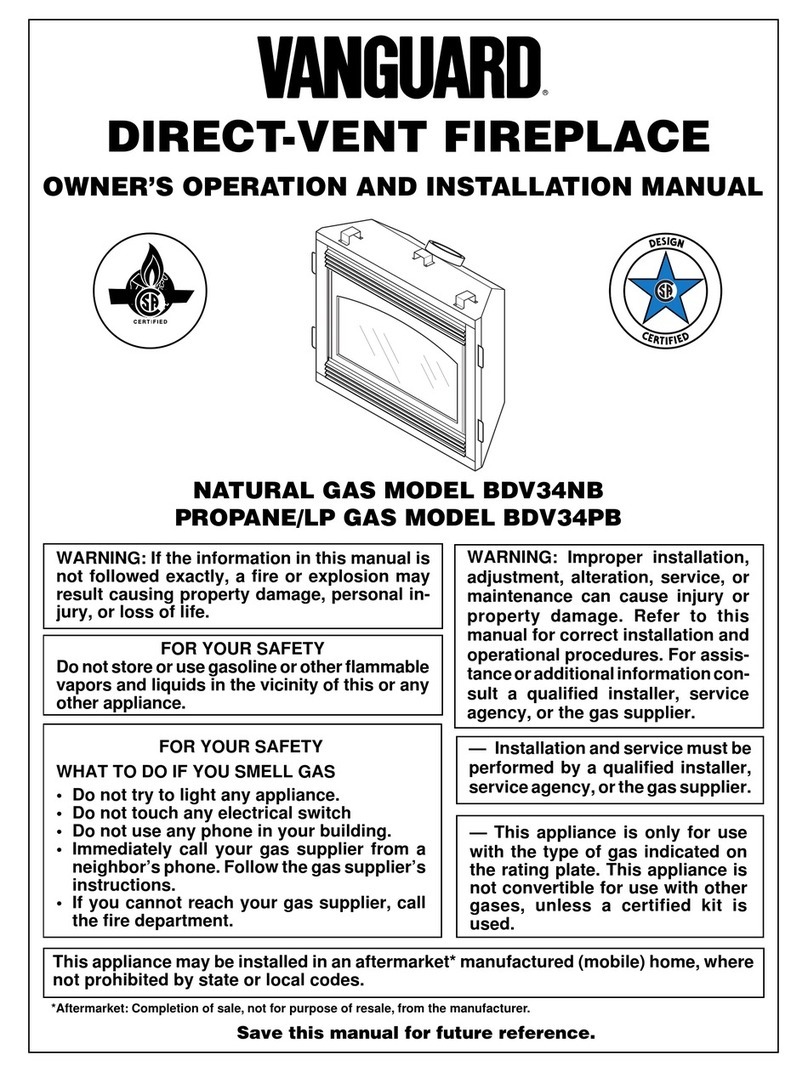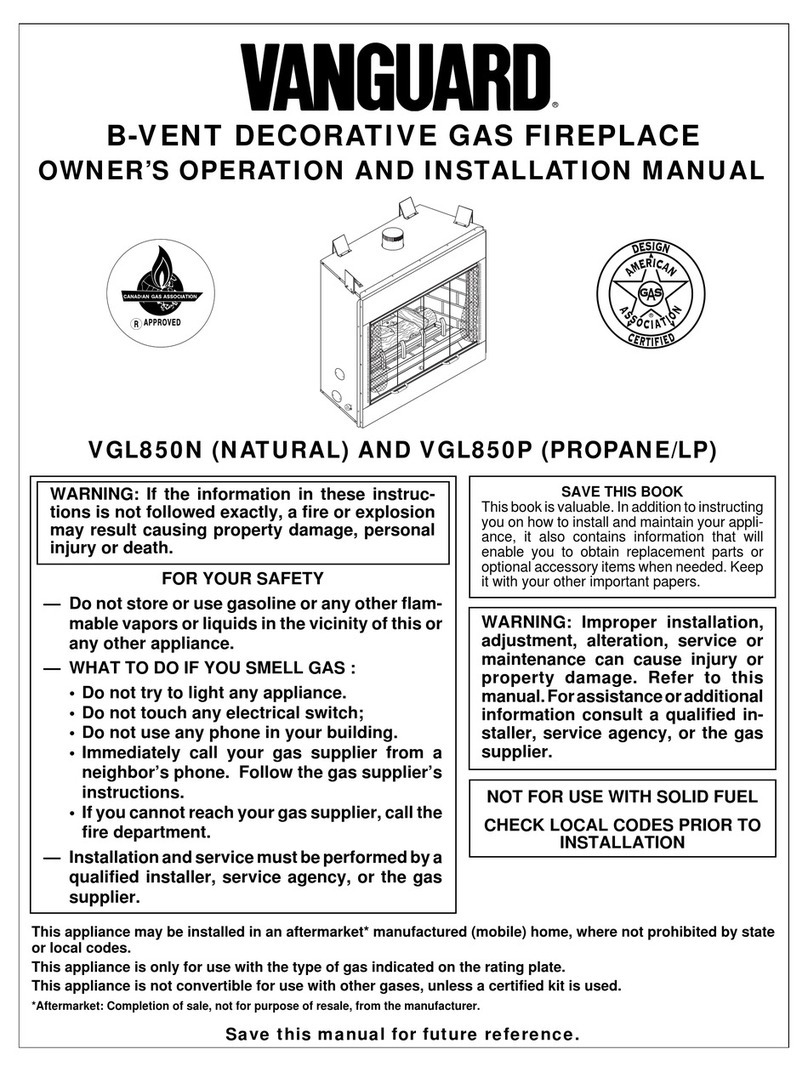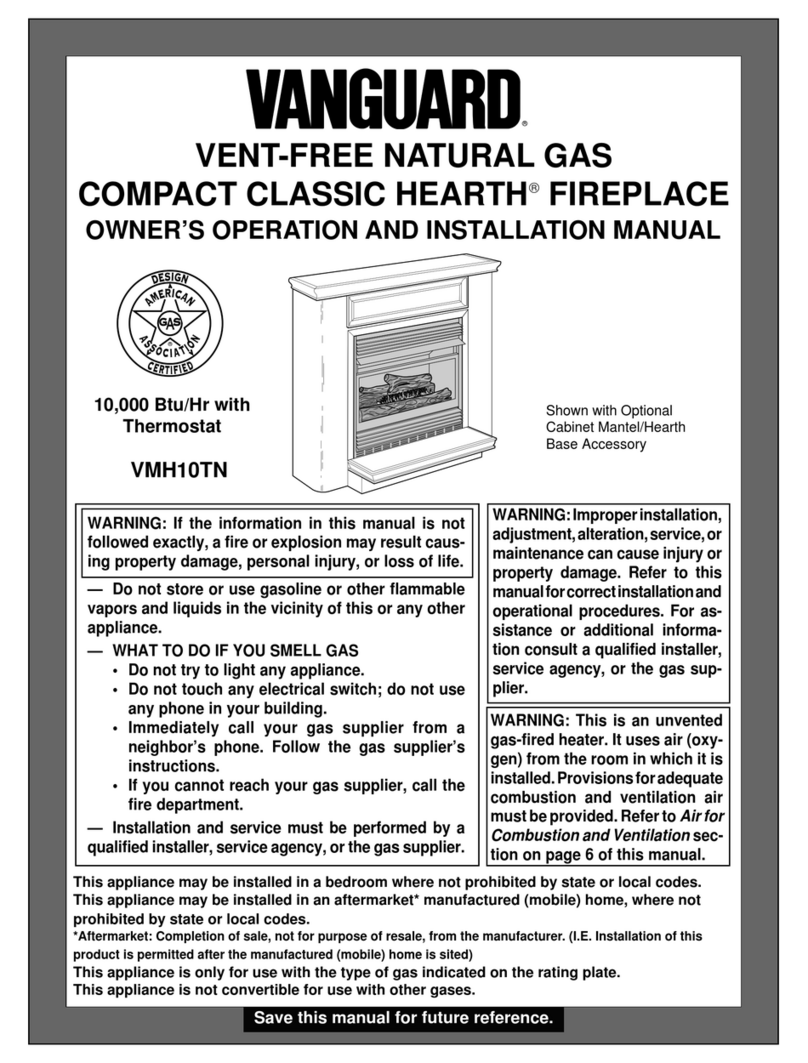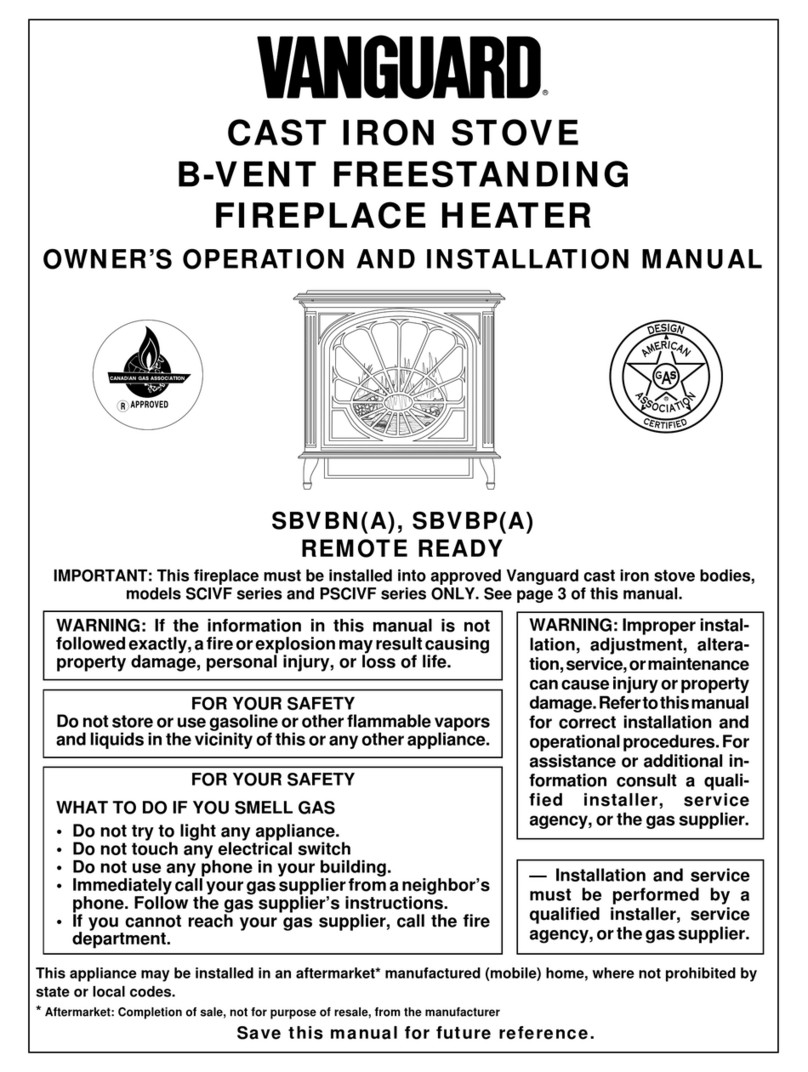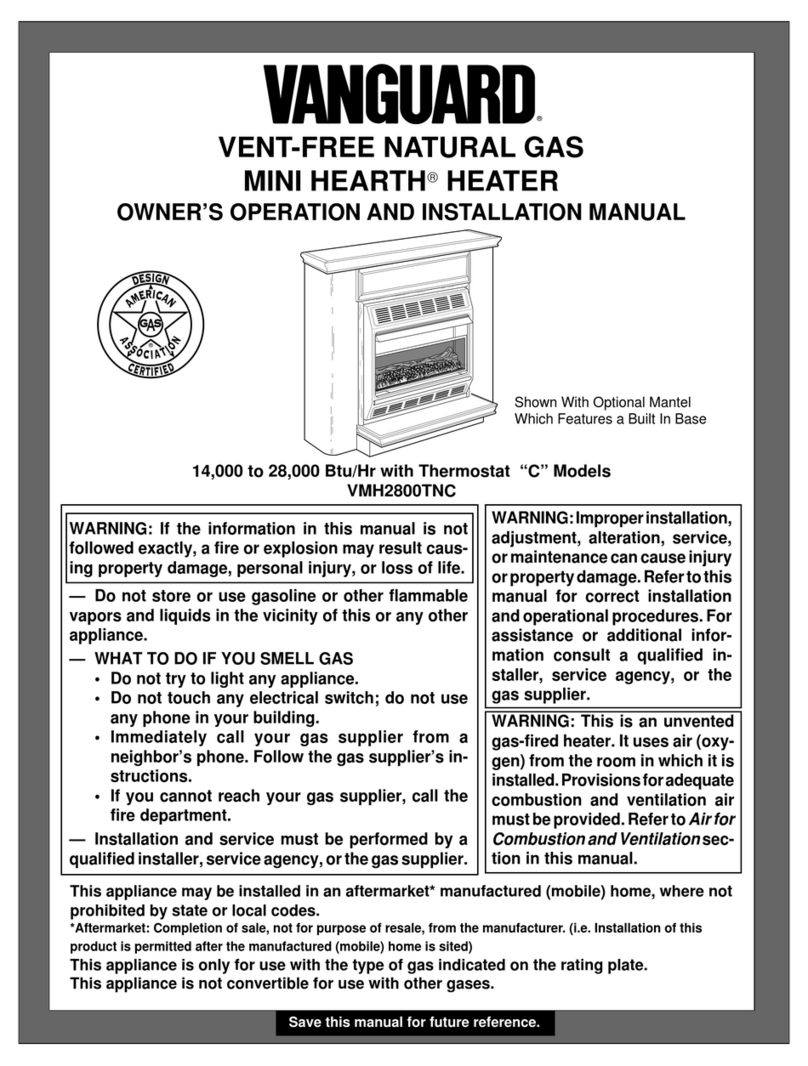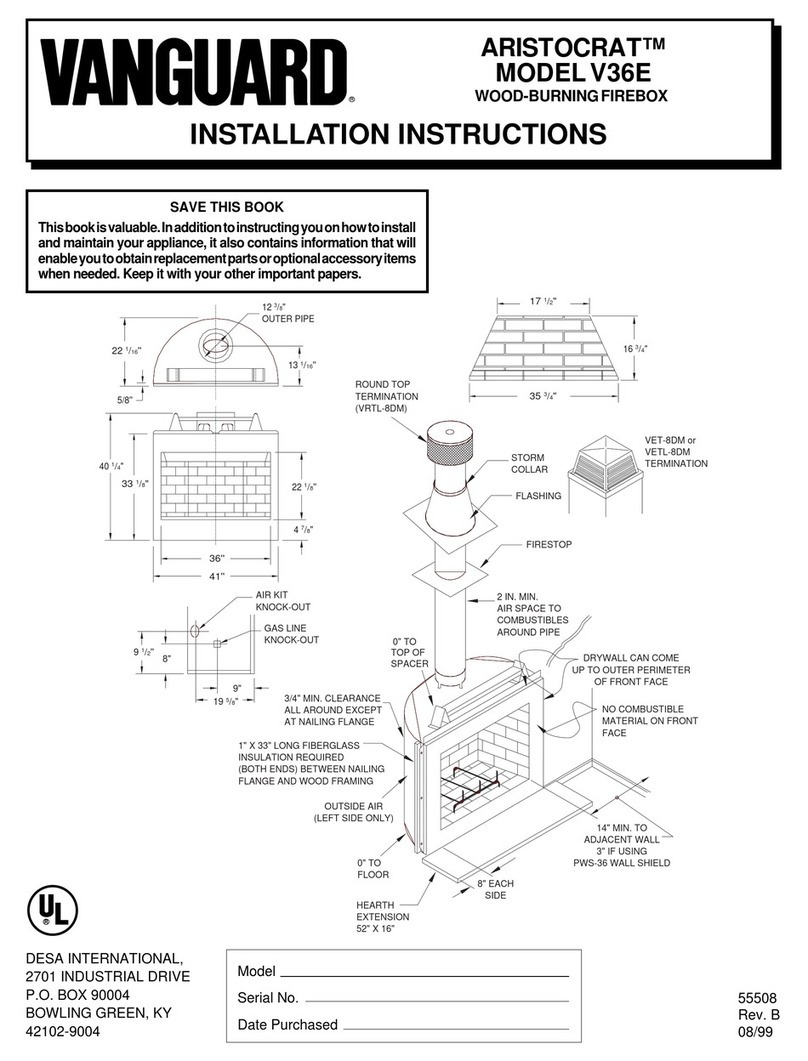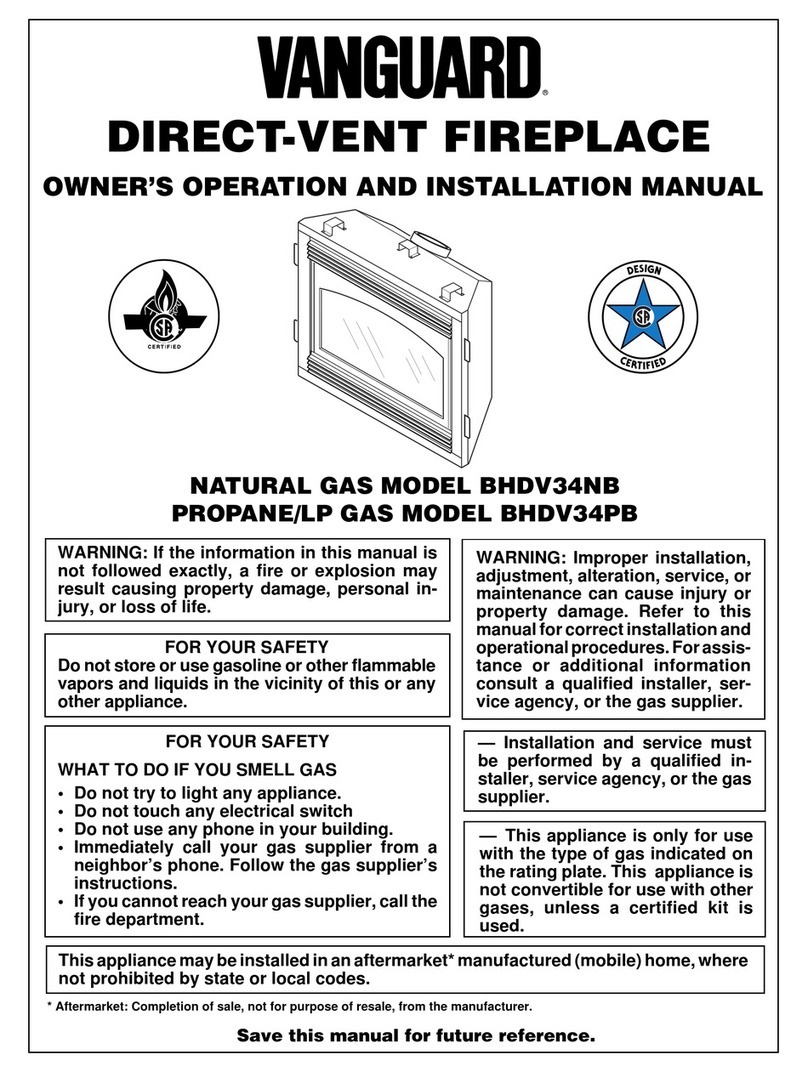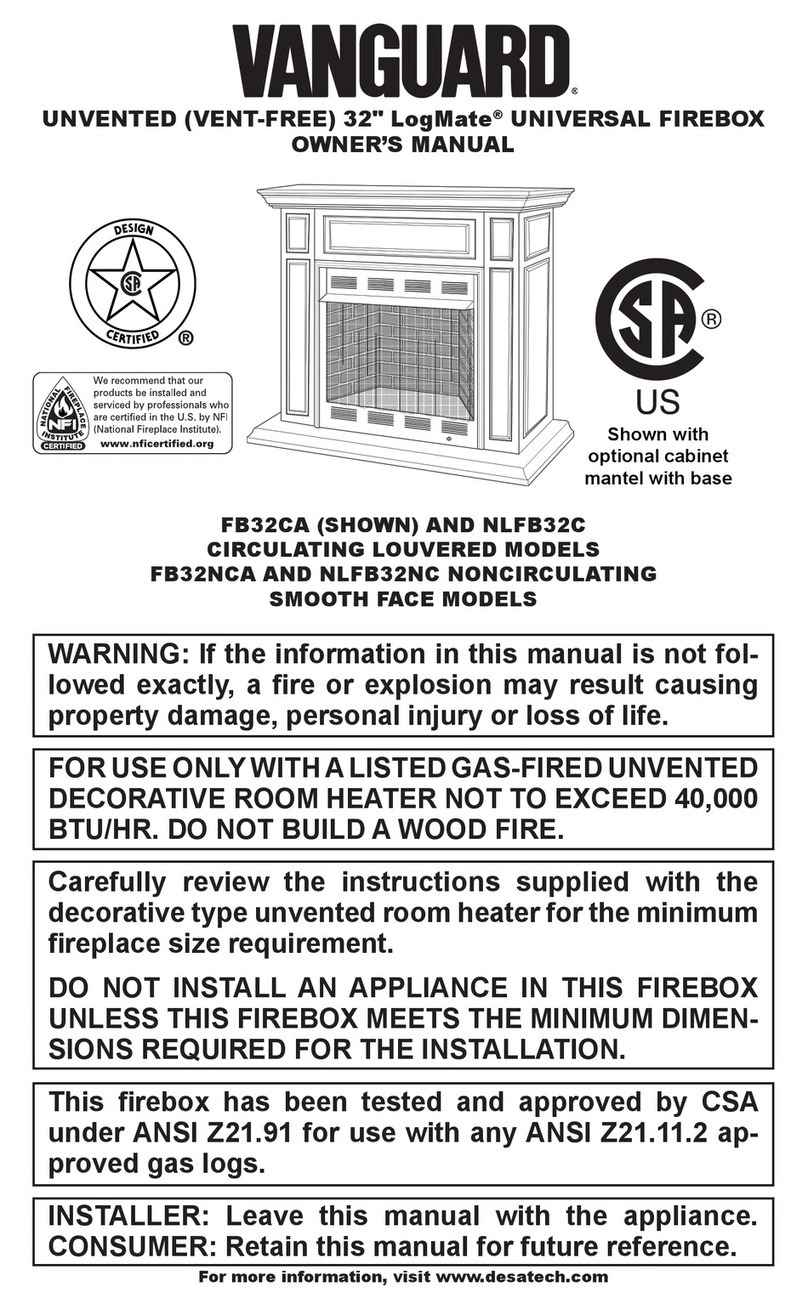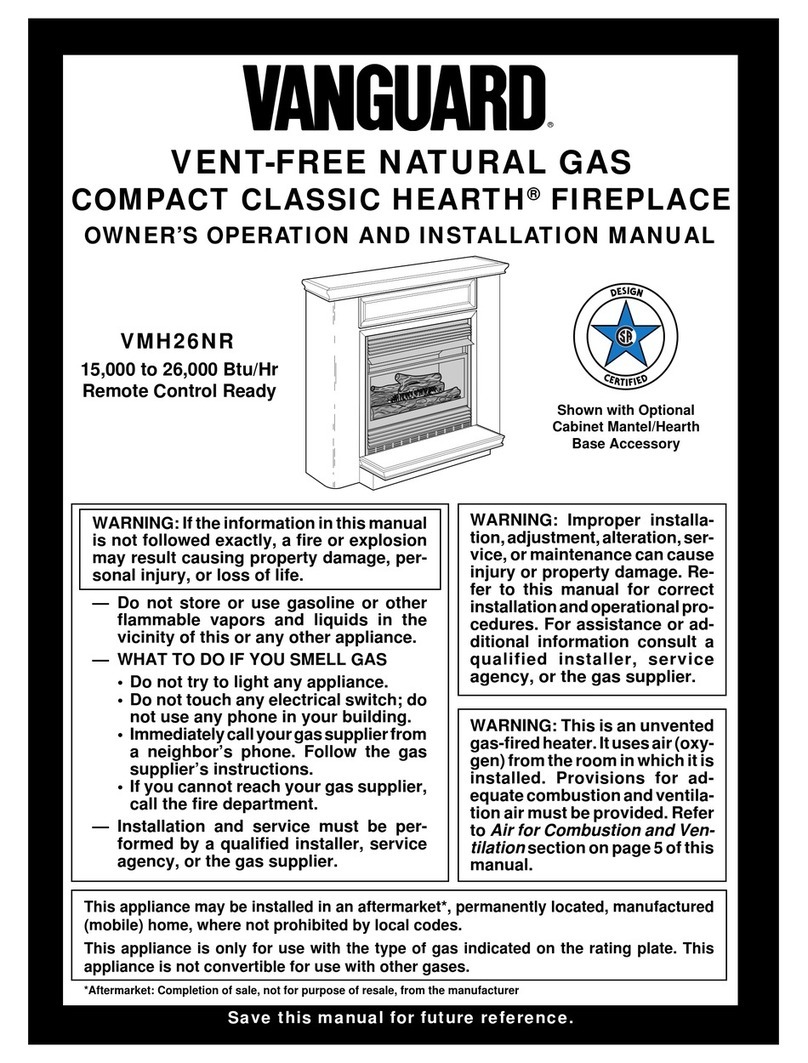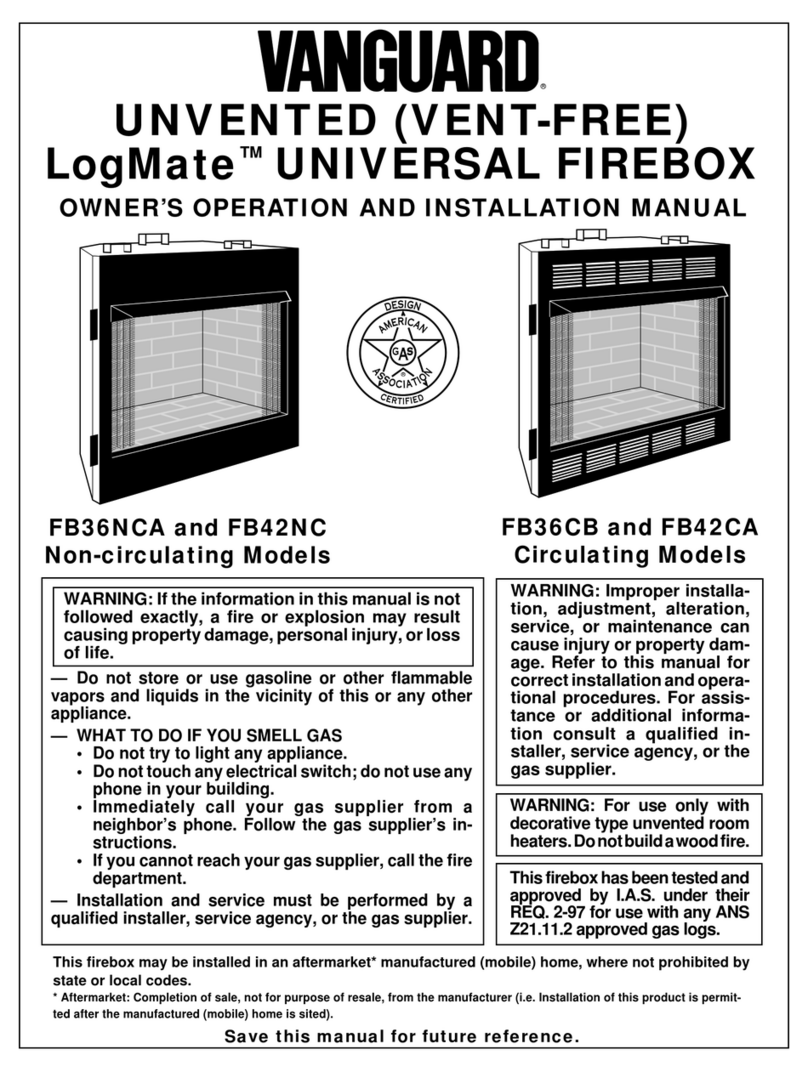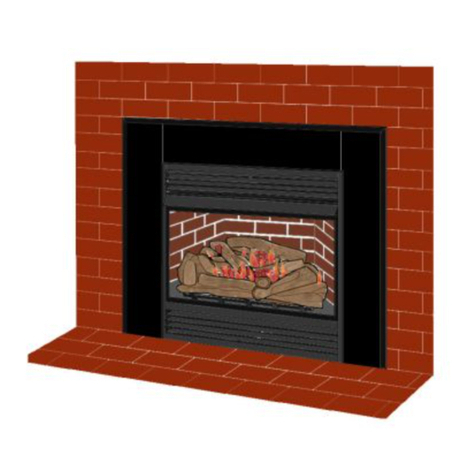
6
106442
MDVFST DIRECT-VENT GAS FIREPLACE
®
WARNING: Read all instruc-
tions completely and thoroughly
beforeattemptinginstallation.Fail-
ureto do so could result in serious
injury, property damage or loss of
life. Operation of improperly in-
stalledandmaintainedventingsys-
tem could result in serious injury,
property damage or loss of life.
WARNING:Sealallventconnec-
tions. Seal only the outer pipe con-
nections high temperature silicone
(600°F/316°C).Beforejoiningelbows
and pipes, apply a bead of high
temperature silicone sealant (GE
RTV 106/Loctite RTV 81585) to the
male end of the elbow or pipe. High
temperature silicone must also be
usedtoresealanyconnectionsafter
maintenance to venting system.
NOTICE: Failure to follow these
instructionswillvoidthewarranty.
INSTALLATION PRECAUTIONS
Consult local building codes before beginning
theinstallation.Theinstallermustmakesureto
select the proper vent system for installation.
Beforeinstallingventkit,theinstallermustread
this fireplace manual and vent kit instructions.
Only a qualified installer or service person
should install venting system. The installer
must follow these safety rules:
• Wear gloves and safety glasses for
protection
• Use extreme caution when using ladders
or when on roof tops
• Be aware of electrical wiring locations
in walls and ceilings
The following actions will void the war-
ranty on your venting system:
• Installation of any damaged venting
component
• Unauthorized modification of the vent-
ing system
• Installation of any component part not
manufactured or approved by DESA
International
• Installation other than as instructed by
these instructions
VENTING
INSTALLATION WARNING:Thisgasfireplace
and vent assembly must be
vented directly to the outside.
TheventingsystemmustNEVER
beattachedtoachimneyserving
a separate solid fuel burning ap-
pliance.Eachgasappliancemust
use a separate vent system. Do
not use common vent systems.
WARNING: Horizontal sections
of this vent system require a mini-
mumclearanceof2"fromthetopof
theventpipeand1"minimumtothe
sidesand bottom. Vertical sections
ofthissystemrequireaminimumof
1"clearancetocombustiblemateri-
als on all sides of the vent pipe.
INSTALLATION PLANNING
There are two basic types of direct-vent
installation:
• Horizontal Termination
• Vertical Termination
It is important to select the proper length of
vent pipe for the type of termination you
choose. It is also important to note the wall
thickness.
For Horizontal Termination: Select the
amountof vertical risedesired. The horizon-
tal run of venting must have 1/4" rise for
every 12" of run towards the termination.
A MDVGFK ground floor horizontal vent
kit is specifically designed for common
horizontal installations in manufactured
(mobile) homes. Additional horizontal in-
stallations are described on page 9. All vent
kits and components are listed on page 13. NOTICE: Treatment of firestops
andconstructionofthechasemay
varyfrombuildingtypetobuilding
type. These instructions are not
substitutes for the requirements
of local building codes. You must
follow all local building codes.
Note:
Wheninstallinginachase,youshould
insulate the chase as you would the outside
walls of your home. This is especially im-
portant in cold climates. Minimum clear-
ance between vent pipes and combustible
materials such as insulation is 1".
After framing the chase (see Framing on
page4) install the vent system by following
the installation instructions.
Installing Vent System in a Chase
A chase is a vertical boxlike structure built
to enclose venting that runs along the out-
sideofabuilding.Achaseisnotrequiredfor
such venting.
WARNING:Neverrunthevent
downward as this may cause ex-
cessive temperatures which
could cause a fire.
You may use one or two 90°elbows in a
horizontal vent configuration. See Horizon-
tal Termination Configurations on page 9.
For Vertical Termination: Measure the dis-
tance from the fireplace flue outlet to the
ceiling. Add the ceiling thickness, the verti-
cal rise in an attic or second story, and allow
for sufficient vent height above the roofline.
You may use one or two 90°elbows in a
verticalventconfiguration.SeeVerticalTer-
minationConfigurationsonpages11and12.
Note:
Youmayusetwo45°elbowsinplace
of a 90°elbow. You must follow rise to run
ratios when using 45°elbows.
The MDV9K 9' vertical vent kit is specifi-
callydesignedforcommonverticalinstalla-
tions in manufactured (mobile) homes. Ad-
ditional vertical installations are described
on pages 11 and 12. All vent kits and com-
ponents are listed on page 13.
For two-story applications, firestops are re-
quired at each floor level. If an offset is
needed in the attic, additional pipe and el-
bows will be required.
You may use a chase with a vent termination
withexposedpipeontheexteriorofthehouse.
SeeInstallingVent System in a Chase, below.
Your Vanguard direct-vent fireplace has
been tested for a minimum 3' rise with a
maximum 10" wall thickness. The maxi-
mum horizontal run is 20' with 8' vertical
rise (see Installation for Horizontal Termi-
nation, pages 7 through 9). The maximum
vertical run is 40' (see Installation for Ver-
tical Termination, page 10 through 12).
It is very important that the venting system
maintain its balance between the combus-
tion air intake and the flue gas exhaust.
Certain limitations apply to vent configura-
tions and must be strictly followed.
